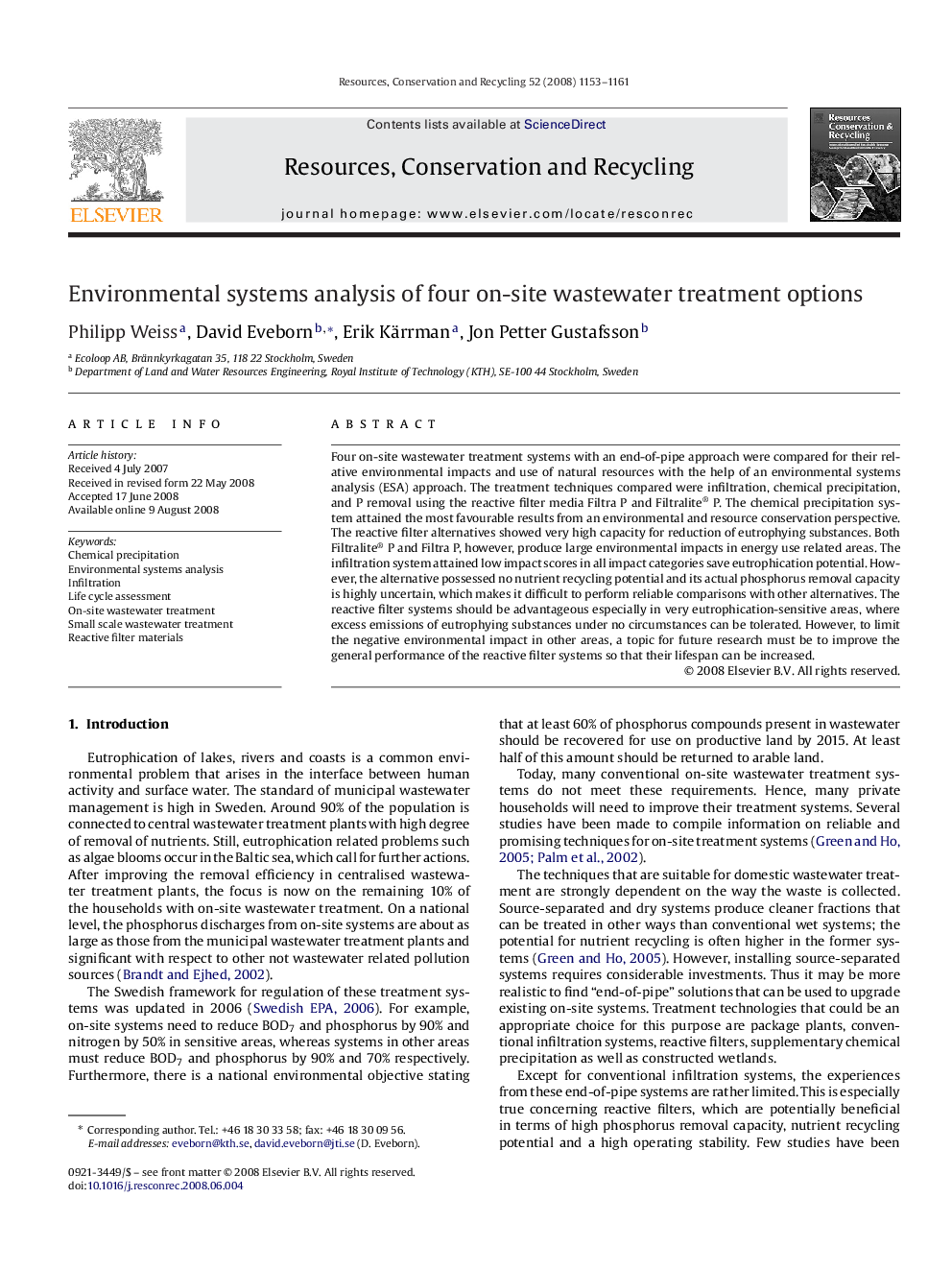| Article ID | Journal | Published Year | Pages | File Type |
|---|---|---|---|---|
| 1063639 | Resources, Conservation and Recycling | 2008 | 9 Pages |
Four on-site wastewater treatment systems with an end-of-pipe approach were compared for their relative environmental impacts and use of natural resources with the help of an environmental systems analysis (ESA) approach. The treatment techniques compared were infiltration, chemical precipitation, and P removal using the reactive filter media Filtra P and Filtralite® P. The chemical precipitation system attained the most favourable results from an environmental and resource conservation perspective. The reactive filter alternatives showed very high capacity for reduction of eutrophying substances. Both Filtralite® P and Filtra P, however, produce large environmental impacts in energy use related areas. The infiltration system attained low impact scores in all impact categories save eutrophication potential. However, the alternative possessed no nutrient recycling potential and its actual phosphorus removal capacity is highly uncertain, which makes it difficult to perform reliable comparisons with other alternatives. The reactive filter systems should be advantageous especially in very eutrophication-sensitive areas, where excess emissions of eutrophying substances under no circumstances can be tolerated. However, to limit the negative environmental impact in other areas, a topic for future research must be to improve the general performance of the reactive filter systems so that their lifespan can be increased.
